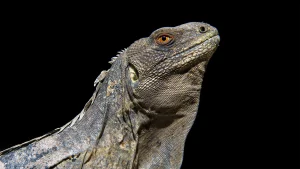Cusuco National Park
Located in the Merendón Mountain 20 km, west of the city of San Pedro Sula, the Cusuco National Park was declared a National Park in 1987 by the National Congress; it covers an area of 177.0431 km2 and 10 km2 of the untouchable core zone with a maximum elevation of 2242 meters.
The Park protects the highest and most risky ecosystems, those found from 1800 meters high. After World War II, a North American logging company exploited much of the lowlands of the Cusuco region, the main access road to Cusuco was built during this time.
In 1959, logging activities stopped, and the entire area was declared a Reserve Forest Zone No. 2 by Decree No: 53 of
March 10 , to protect water sources, flora and fauna; thus preserving the last primary forests that still existed in the highlands.
The Cusuco National Park presents a mixture of primary and secondary forest.
The origin of its name is due to the typical armadillo, or cusuco, found in Central America and that occurs in abundance in that area, another peculiarity that the inhabitants of the region observed is that the trucks that travel to the sawmill looked like cusucos.
This Park is the only cloud forest in the Department of Cortés, in the lower parts of the mountain, the vegetation is made up of pine forests and tropical forest. At about 1500 meters, the transition to cloud forest begins. Another typical species of the cloud forests of Central America is the Green Toucan (Alaucorhynchus prasinus), or the small Goldfinch (Myadestes unicolor), which is recognized for its sweet song early in the day.

The Cusuco National Park is of valuable importance for the communities of its buffer zone and San Pedro Sula because it produces water for these places. Cloud forests are reservoirs of water, hence the importance of conserving them.
One of the typical sounds at dawn in Cusuco National Park is the song of the Resplendent Quetzal (Pharomachrus mocinno), the mystical and sacred bird of the Aztecs and the Mayans. The latest stories explain the bright red of the male quetzal’s chest was a symbol of the eternal life of the Mayan warriors, who had perished during pitched battles against the Spanish. The Quetzal was the sign that the gods would come to take and save the soul of the warriors. Aztec legends are similar, arguing that the red breast was the symbol of the blood of the last King Moctezuma. Which died during the Spanish conquest.
Trees over 20 meters high are found in this Park and it gives the impression of being in a Jurassic park. This Park has a very good main trail system, four trails start from the visitor center and offer hikes ranging from one to three kilometers. The Visitor Center offers basic accommodation services with sanitary services.
When visiting the Cusuco you can appreciate not only the natural beauty that the place offers, but also the special and harmonious lifestyle of many of the surrounding communities. The visitor can interact with local people, visit coffee plantations and other crops that grow in the area.



